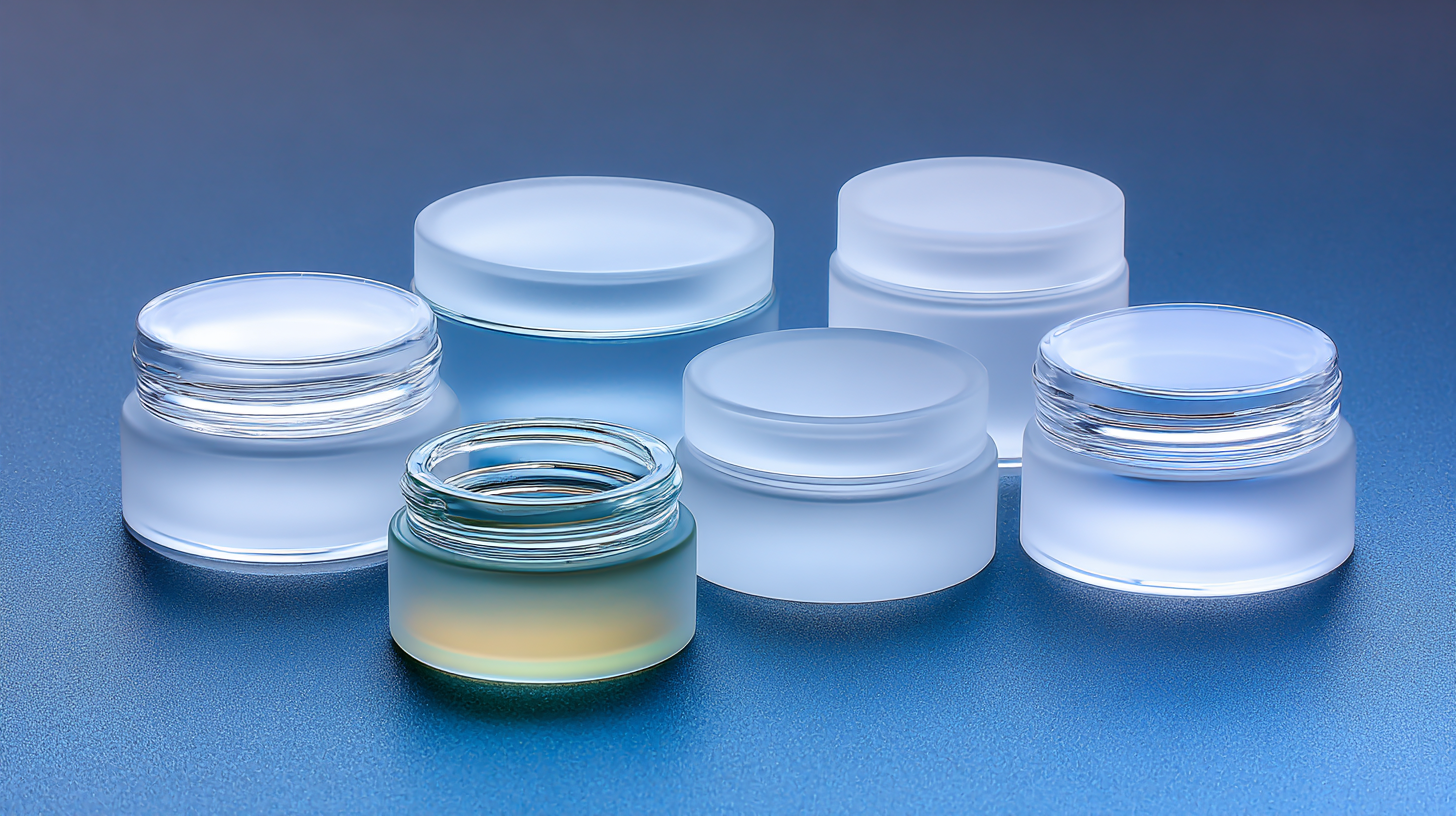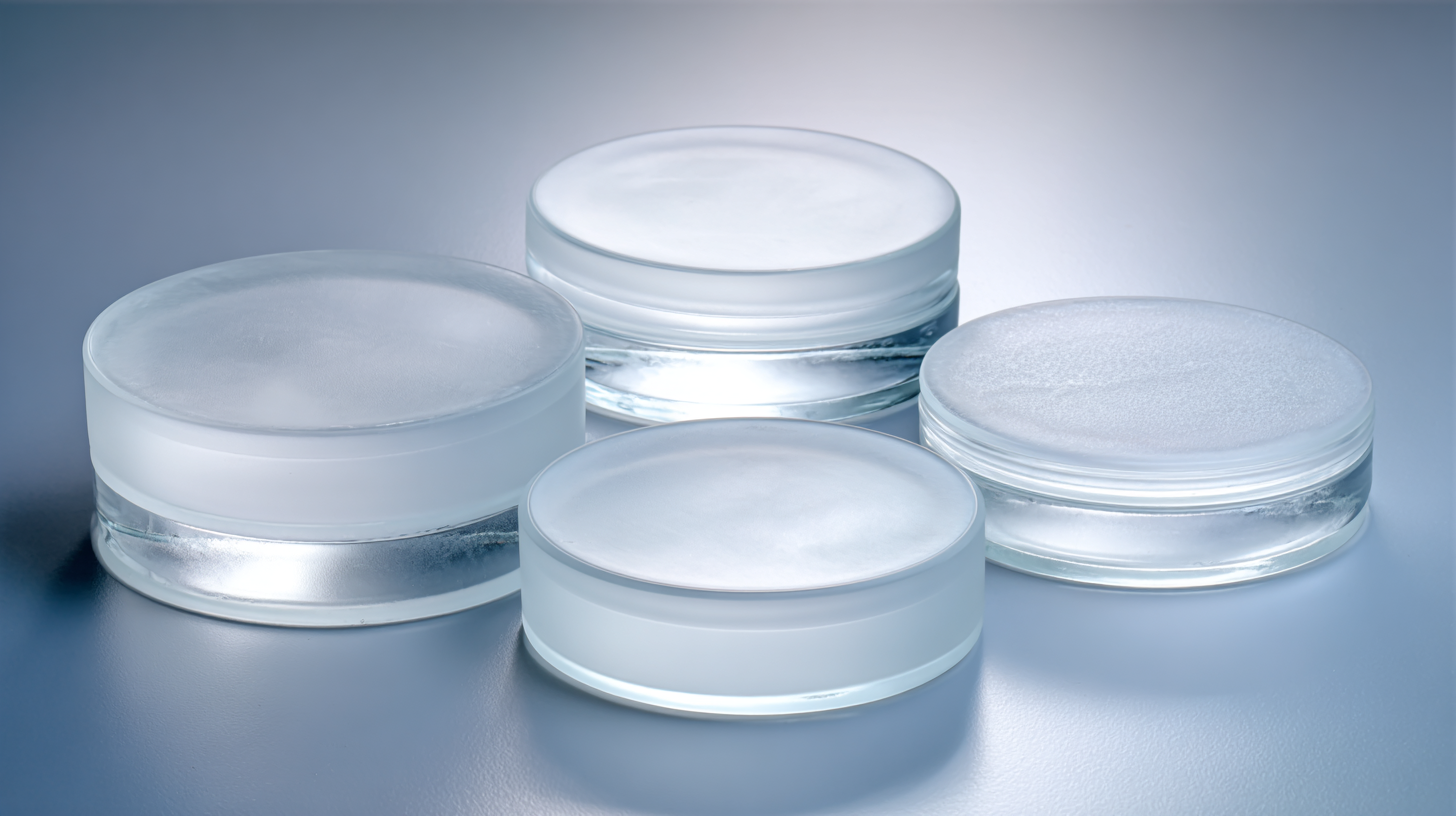
In the competitive world of kitchenware, frosted glass lids have emerged as a popular choice among global buyers due to their aesthetic appeal and functional benefits. Recent industry reports indicate that the demand for kitchen glassware, including frosted glass lids, is projected to grow at a CAGR of 5.2% from 2023 to 2030, driven by rising consumer preferences for stylish and durable cooking products.
 The unique properties of frosted glass not only enhance visibility but also provide added advantages in terms of heat retention and food safety. Furthermore, with an increasing focus on after-sales service advantages and repair costs, manufacturers are looking to improve the usability and longevity of frosted glass lids.
The unique properties of frosted glass not only enhance visibility but also provide added advantages in terms of heat retention and food safety. Furthermore, with an increasing focus on after-sales service advantages and repair costs, manufacturers are looking to improve the usability and longevity of frosted glass lids.
This blog aims to explore the technical specifications of the best frosted glass lids available in the market today, providing insights into their functionality, design, and future trends within the culinary landscape.
The frosted glass lid industry is poised for significant growth, with an anticipated increase in demand projected to reach remarkable levels by 2025. This surge can be attributed to a rising preference for stylish, durable kitchenware that enhances the aesthetics of home decor while also providing functionality. As consumers lean towards sustainable and innovative solutions, the market for frosted glass lids is expanding beyond traditional uses, finding new applications in food storage and serving.
When choosing the best frosted glass lids, consider these tips: First, look for lids made from high-quality tempered glass, as they are more resistant to thermal shock and often dishwasher safe. Second, prioritize lids with silicone or rubber seals to ensure an airtight fit, which helps preserve food freshness. Lastly, consider the size and compatibility with your existing cookware; measuring your pots and containers before purchase can save you from future inconveniences.
The projected growth not only opens up new opportunities for manufacturers but also encourages innovation in design and functionality. As the market evolves, it will be essential for buyers to stay informed about the latest trends and technological advancements that can enhance their culinary experiences.

When it comes to choosing high-quality frosted glass lids, understanding their technical specifications is crucial for global buyers looking for durability and functionality. One of the key characteristics to consider is the thickness of the glass. Thicker lids not only provide enhanced durability but also possess better heat retention properties, making them ideal for cooking and serving. A thickness of at least 5mm is recommended, as it ensures a robust product that can withstand thermal shock and regular use.
Another essential feature is the type of frosted finish used on the glass. High-quality frosted glass lids should be treated with a chemical or sandblasting technique that evenly distributes the frosted texture, ensuring clarity and reducing the appearance of fingerprints. Additionally, look for lids that come with a secure-fitting design, as this helps in creating an airtight seal that preserves freshness and flavors in the storage of various dishes. Lastly, ensure the lids are free from harmful chemicals such as lead and are dishwasher safe, making them both safe for food contact and easy to maintain.
| Dimension (mm) | Thickness (mm) | Frosting Type | Heat Resistance (°C) | UV Protection (%) | Weight (g) |
|---|---|---|---|---|---|
| 250 x 250 | 4 | Acid Etched | 120 | 95 | 600 |
| 200 x 200 | 5 | Sandblasted | 150 | 90 | 500 |
| 300 x 300 | 6 | Frosted Film | 180 | 85 | 700 |
| 180 x 180 | 3 | Satin Etched | 100 | 88 | 450 |
| 400 x 400 | 8 | Frosted Laminated | 200 | 92 | 900 |
When it comes to selecting the perfect frosted glass lids, understanding the material differences between borosilicate glass and soda lime glass is crucial for optimal performance. Borosilicate glass, known for its thermal resistance, can withstand temperature changes up to 220°C, making it an ideal choice for kitchenware and laboratory use. According to a recent industry report by Grand View Research, the global borosilicate glass market is projected to reach USD 9.35 billion by 2025, highlighting its increasing popularity among consumers seeking durability and safety in their glass products.
On the other hand, soda lime glass, while more economical and widely used in everyday items, lacks the robustness of borosilicate. It typically endures temperatures only up to 100°C before it risks cracking or breaking. Industry data indicates that around 90% of glass products in the market are made from soda lime glass due to its lower production costs. However, buyers aiming for longevity and performance in high-temperature environments might gravitate towards borosilicate options, which offer superior strength and are less likely to shatter or crack under pressure. This distinction ultimately guides global buyers in making informed decisions tailored to their specific needs.

As global buyers increasingly seek innovative kitchen solutions, frosted glass lids have emerged as a popular choice. One significant trend influencing consumer preferences is the growing demand for aesthetics and functionality in kitchenware. Frosted glass lids not only enhance the visual appeal of cookware but also offer practical benefits such as heat resistance and easy visibility of dishes while cooking. This dual functionality has captured the attention of design-conscious consumers who prioritize both style and usability in their kitchen environments.
Moreover, sustainability is becoming a pivotal factor in purchase decisions. Buyers are increasingly favoring products made from eco-friendly materials, and frosted glass lids fit perfectly into this narrative. The durability and recyclability of glass appeal to environmentally-conscious consumers looking for sustainable alternatives to plastic. As more brands recognize this trend, they are focusing on delivering products that align with the eco-friendly values of their customers, further driving the global demand for frosted glass lids in the marketplace.
The growing emphasis on sustainability has led to significant innovations in the production of frosted glass lids. By utilizing eco-friendly materials and manufacturing processes, companies are responding to the increasing consumer demand for greener products. These advancements not only reduce environmental impact but also enhance the aesthetic appeal of products, proving that sustainability and design can go hand in hand.
One of the key trends in this sector is the integration of advanced technologies that minimize waste during production. Manufacturers are adopting techniques such as recycled glass and energy-efficient processes to create frosted glass lids that meet stringent environmental standards. This commitment to sustainability not only captures the attention of eco-conscious consumers but also aligns with broader industry goals of reducing carbon footprints. As a result, frosted glass lids are emerging as a popular choice for brands aiming to marry functionality with a commitment to the planet.
